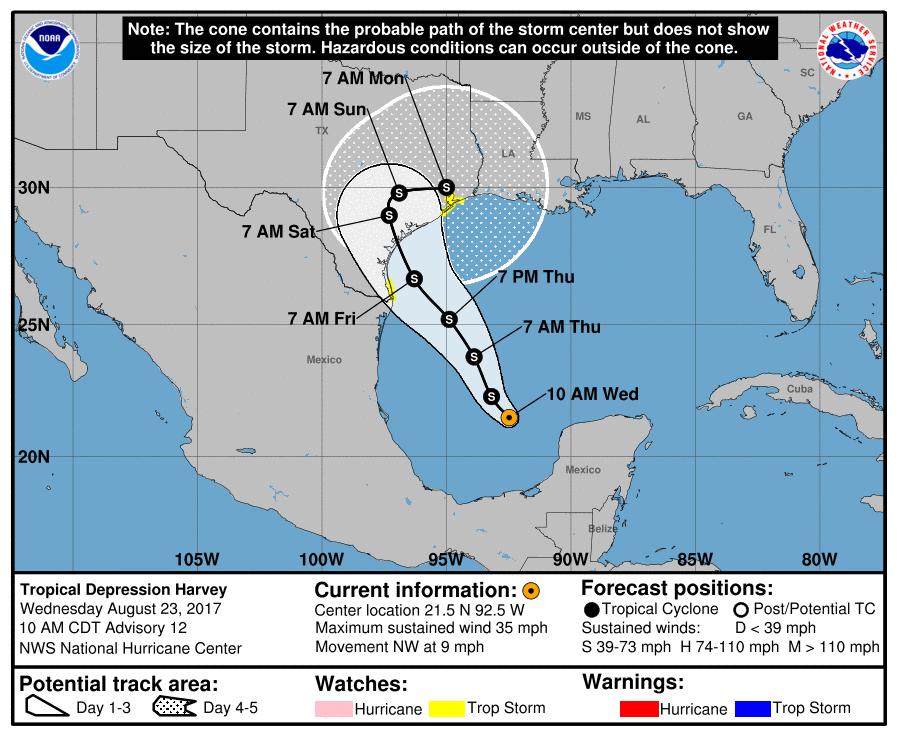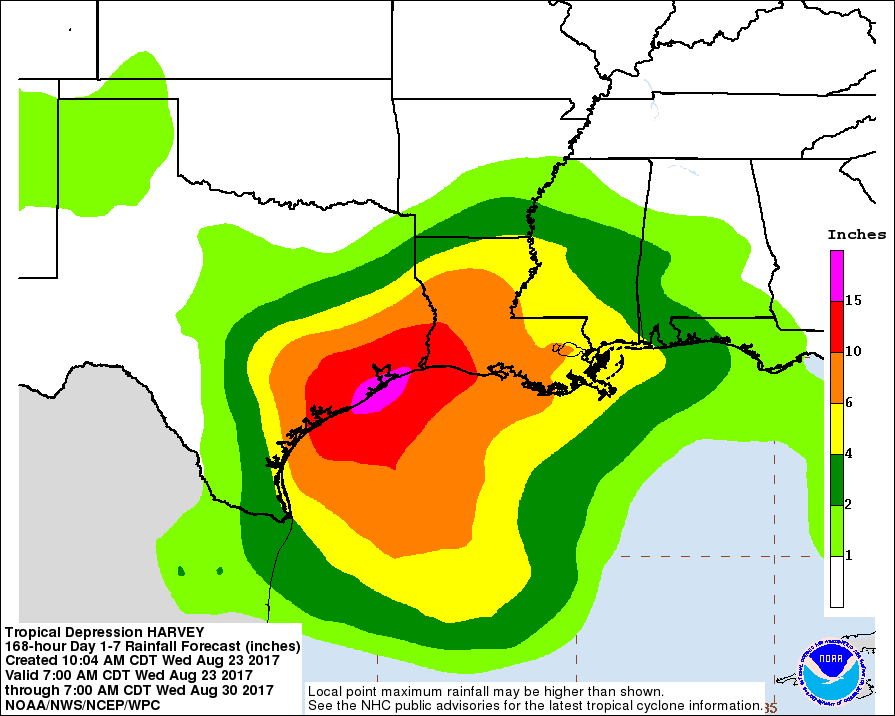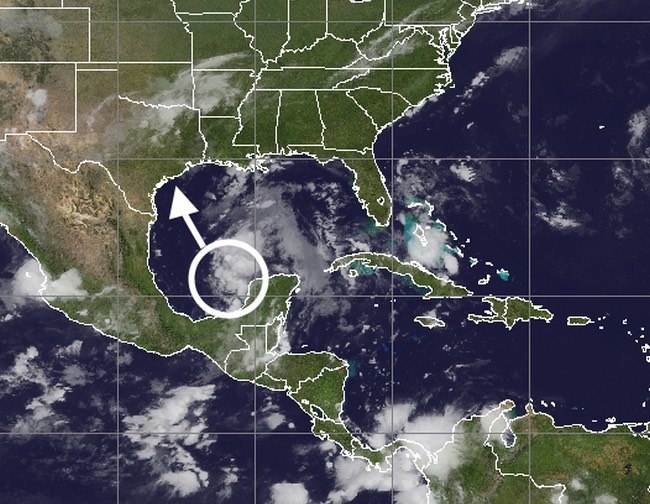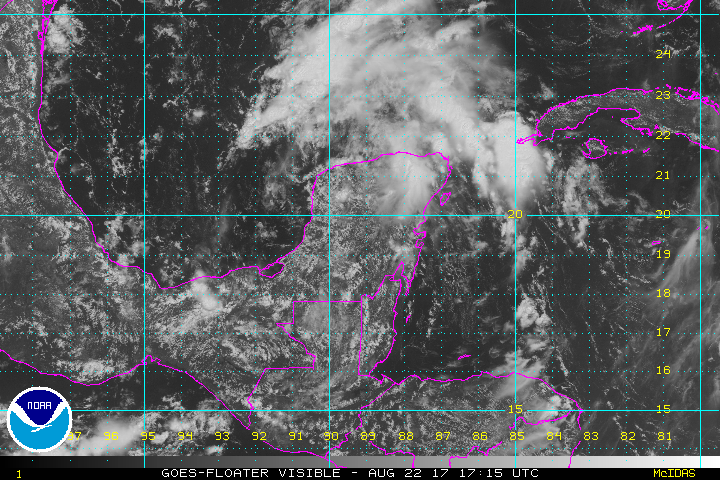As of 2:30pm CT, Harvey remains a depression in the southwestern Gulf of Mexico. We remain most concerned about the potential of this tropical system to drop a prodigious amount of rain from Friday through Tuesday or Wednesday of next week, primarily due to the fact that it will likely stall, or nearly so, once it moves into Texas this weekend. Let’s jump into the forecast.
Harvey track and intensity
The depression remains fairly poorly organized this afternoon, and that’s a good thing, because once it begins to develop a tightly organized circulation, there will be little to inhibit from strengthening further. The official forecast calls for a 75-mph hurricane to make landfall along the Texas coast Friday afternoon. It’s worth noting that the models (including the European forecast system) have shifted a bit to the left, meaning that a landfall between Brownsville and Corpus Christi now seems most probable. That may be good for the Houston region in terms of storm surge, but as we’ll see, it may matter little in terms of rainfall.
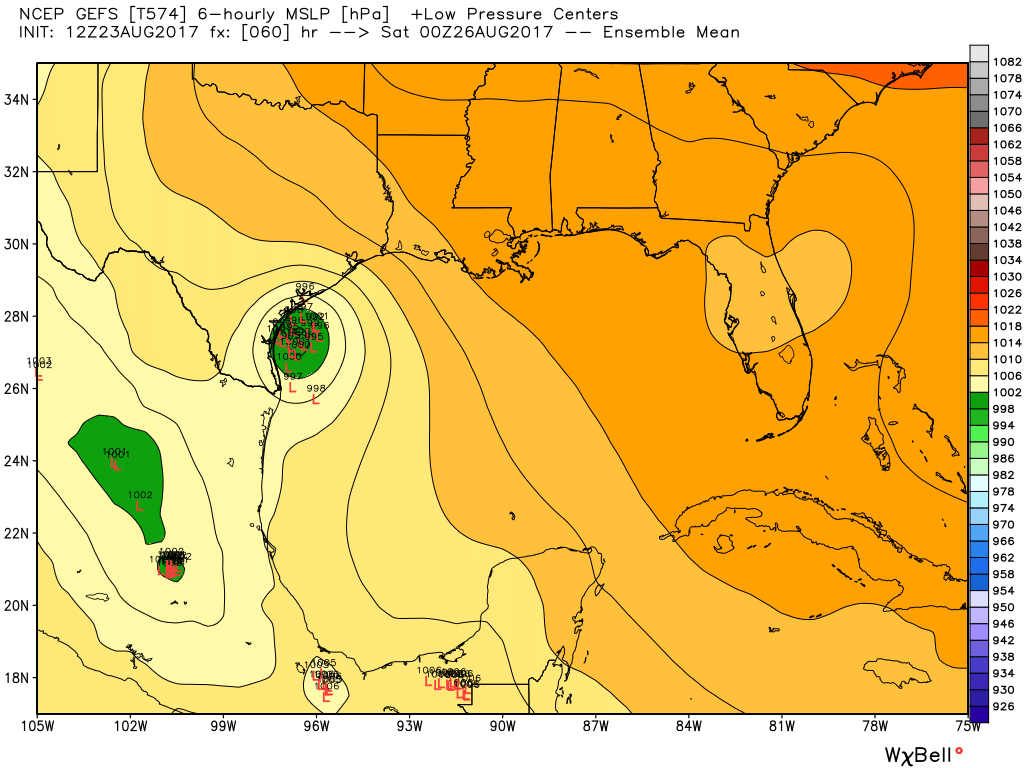
Rainfall, and timing
Please note that the following is speculative, but we’re attempting to affix a time frame to this storm and its effects because we’ve had a lot of travel questions. The following forecast assumes a Friday landfall along the south Texas coast, and therefore the forecast is subject to change. You have been warned.

